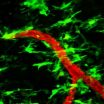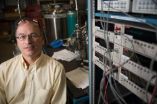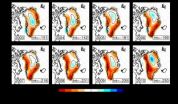(Press-News.org) Boulder, Colorado, USA - Social and physical scientists have long been concerned about the effects of humans on Earth's surface -- in part through deforestation, encroachment of urban areas onto traditionally agricultural lands, and erosion of soils -- and the implications these changes have on Earth's ability to provide for an ever-growing population. The December 2012 GSA Today science article presents examples of land transformation by humans and documents some of the effects of these changes.
Researchers Roger Hooke of the University of Maine, USA, and José F. Martín-Duque and Javier Pedraza of Complutense University, Spain, examine factors such as available agricultural land area and discuss some of the implications of their findings in light of human population growth and its relationship to planetary resources.
Overall, they find that just over 50% of Earth's total land surface has been modified by human activity. Because many of these modifications also result in reduction of land available for agriculture -- either by degradation of land quality by processes such as soil erosion, or by transforming agriculture lands to urban uses -- Hooke and colleagues argue that these changes to our planet's land surface also influence the ability of these same lands to sustain local, regional, and, ultimately, global population.
Comparing projections of future changes in land-use with projections of population growth leads them to also suggest that human population may be entering, or already in, a state of "overshoot" -- where the needs of the present population exceed the long-term carrying capacity of a region. Solutions may not be easy to arrive at, but would need to involve a combination of efforts aimed to reduce demand for resources, develop new technical solutions to resource limitations, and to reduce the rate of growth of population.
INFORMATION:
ARTICLE
Land transformation by humans: A review
Roger LeB. Hooke, School of Earth and Climate Sciences and Climate Change Institute, University of Maine, Orono, Maine 04469-5790, USA; José F. Martín-Duque, Dept. of Geodynamics and Geosciences Institute (CSIC-UCM), Complutense University, 28040 Madrid, Spain; and Javier Pedraza, Dept. of Geodynamics, Complutense University, 28040 Madrid, Spain. Pages 4-10, doi: 10.1130/GSATG151A.1.
GSA TODAY articles are open access online; for a print copy, please contact Kea Giles. Please discuss articles of interest with the authors before publishing stories on their work, and please make reference to GSA TODAY in articles published.
www.geosociety.org
GSA Today: Human transformation of land threatens future sustainability?
2012-11-28
ELSE PRESS RELEASES FROM THIS DATE:
Resolving conflicts over end-of-life care: Mayo experts offer tips
2012-11-28
ROCHESTER, Minn. -- It's one of the toughest questions patients and their loved ones can discuss with physicians: When is further medical treatment futile? The conversation can become even more difficult if patients or their families disagree with health care providers' recommendations on end-of-life care. Early, clear communication between patients and their care teams, choosing objective surrogates to represent patients and involving third parties such as ethics committees can help avoid or resolve conflicts, Mayo Clinic experts Christopher Burkle, M.D., J.D., and Jeffre ...
How to buy an ethical diamond
2012-11-28
BUFFALO, N.Y. -- You've already decided that you're going to pop the question. Now comes another quandary: Where to get the ring, if you're buying one?
The holidays are a busy time for engagements, and Trina Hamilton, a University at Buffalo expert in corporate responsibility, says socially minded consumers have a lot to think about when it comes to finding the right rock.
In recent years, shoppers have turned to Canadian diamonds as news reports and movies exposed the diamond trade's role in fueling armed conflicts in developing countries. (Think "Blood Diamond," the ...
East Asia faces unique challenges, opportunities for stem cell innovation
2012-11-28
Tension is the theme running through the new consensus statement issued by the Hinxton Group, an international working group on stem cell research and regulation. Specifically, tension between intellectual property policies and scientific norms of free exchange, but also between eastern and western cultures, national and international interests, and privatized vs. nationalized health care systems.
The consensus, titled Statement on Data and Materials Sharing and Intellectual Property in Pluripotent Stem Cell Science in Japan and China, was released on the Hinxton Group's ...
Reducing sibling rivalry in youth improves later health and well-being
2012-11-28
UNIVERSITY PARK, Pa. -- Sibling conflict represents parents' number one concern and complaint about family life, but a new prevention program -- designed and carried out by researchers at Penn State -- demonstrates that siblings of elementary-school age can learn to get along. In doing so, they can improve their future health and well-being.
"Negative sibling relationships are strongly linked to aggressive, anti-social and delinquent behaviors, including substance use," said Mark Feinberg, research professor in the Prevention Research Center for the Promotion of Human ...
NIH-funded researchers show possible trigger for MS nerve damage
2012-11-28
High-resolution real-time images show in mice how nerves may be damaged during the earliest stages of multiple sclerosis. The results suggest that the critical step happens when fibrinogen, a blood-clotting protein, leaks into the central nervous system and activates immune cells called microglia.
"We have shown that fibrinogen is the trigger," said Katerina Akassoglou, Ph.D., an associate investigator at the Gladstone Institute for Neurological Disease and professor of neurology at the University of California, San Francisco, and senior author of the paper published ...
Rocks, water, air, space ... and humans: An NSF recipe for AGU success
2012-11-28
The National Science Foundation is suggesting adding a bit of spice to a geophysical scientist's research recipe of rocks, water, air, space and life:
Humans.
At next month's Fall Meeting of the American Geophysical Union (AGU) a behemoth of a conference of nearly 20,000 Earth and space scientists, educators, students and policy makers, an international group of scientists will make the case for adding the human element to their research.
The International Network of Research in Coupled Human and Natural Systems – CHANS-Net – is supported by the National Science ...
Kentucky study finds common drug increases deaths in atrial fibrillation patients
2012-11-28
LEXINGTON, Ky. (Nov. 27, 2012) -- Digoxin, a drug widely used to treat heart disease, increases the possibility of death when used by patients with a common heart rhythm problem − atrial fibrillation (AF), according to new study findings by University of Kentucky researchers. The results have been published in the prestigious European Heart Journal, and raises serious concerns about the expansive use of this long-standing heart medication in patients with AF.
UK researchers led by Dr. Samy Claude Elayi, associate professor of medicine at UK HealthCare's Gill Heart ...
Scripps Research Institute study points to potential new therapies for cancer and other diseases
2012-11-28
LA JOLLA, CA – November 27, 2012 – Researchers at The Scripps Research Institute (TRSI) are fueling the future of cancer treatment by improving a powerful tool in disease defense: the body's immune system. By revealing a novel but widespread cell signaling process, the scientists may have found a way to manipulate an important component of the immune system into more effectively fighting disease.
The study, recently published online ahead of print by the journal Blood, shows that disabling a particular enzyme, called ItpkB, in mice improves the function of a type of immune ...
New thermoelectric material could be an energy saver
2012-11-28
By using common materials found pretty much anywhere there is dirt, a team of Michigan State University researchers have developed a new thermoelectric material.
This is important, they said, because the vast majority of heat that is generated from, for example, a car engine, is lost through the tail pipe. It's the thermoelectric material's job to take that heat and turn it into something useful, like electricity.
The researchers, led by Donald Morelli, a professor of chemical engineering and materials science, developed the material based on natural minerals known ...
Princeton research: Embracing data 'noise' brings Greenland's complex ice melt into focus
2012-11-28
VIDEO:
Princeton University researchers developed an enhanced approach to capturing changes on the Earth's surface via satellite that could provide a more accurate account of how geographic areas change as a...
Click here for more information.
An enhanced approach to capturing changes on the Earth's surface via satellite could provide a more accurate account of how ice sheets, river basins and other geographic areas are changing as a result of natural and human factors. ...




